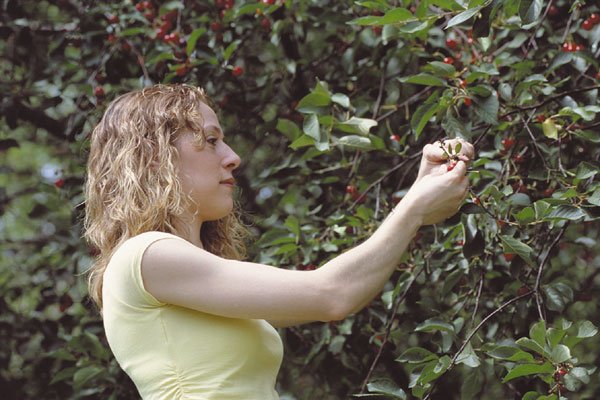It’s garden questions and answers again! You may e-mail me
questions at: ga*******@*ps.net. Or you can mail me questions in
care of this newspaper. For a faster, personal response, please
include a self-addressed, stamped envelope.
Q: I’ve had a plum tree at least 25 years and it has done great
until this year.
It’s garden questions and answers again! You may e-mail me questions at: ga*******@*ps.net. Or you can mail me questions in care of this newspaper. For a faster, personal response, please include a self-addressed, stamped envelope.
Q: I’ve had a plum tree at least 25 years and it has done great until this year. It is blooming beautifully on the right side, but the left side looks dead. The big branches on that side are covered with hard, mushroom-looking growth. Is this some sort of fungus? Is the tree salvageable with spraying? – C.H., Gilroy, via-e-mail.
A: Congratulations on diagnosing your plum tree’s problem as a fungus. In all probability, the mushroom-looking growth is black knot fungus. It infects plums, as well as cherry trees. This fungus will cause dieback and can eventually kill the tree.
The knots are often described as looking like blackened marshmallows.
The knots often have a rough, blistered, corky appearance. Remove the black knots by pruning out infected branches four inches below the growths. For larger limbs you don’t want to remove, scrape the growth off the bark. Spray with a lime sulphur fungicide right now, and repeat more frequently as our weather warms.
There is always a chance that your plum tree can not be “cured.” If dieback continues, your only alternative is to remove it. I’ve always recommended that if something in the garden is not at its best, remove it and try something else. Life is too short to struggle with a diseased and dying specimen. In fact, even as I write this, I have a pear tree that needs to be removed from my garden. The tree simply has not produced well the past couple years, and I’ve had to remove a couple large branches that also became diseased. I’m planning on replacing the pear tree with a citrus. The only reason I’ve procrastinated is I can’t decide what type of citrus I want to plant!
Q: I’m interested in planting a cherry tree in my backyard. Do they grow in our area and, if so, what variety should I select and when should I plant them? – D.K., San Jose, via e-mail.
A: Cherries, as many local commercial cherry growers will attest, grow great in our area. The only problem for home gardeners, though, is space. Cherry trees need pollinizers, meaning you need two different varieties growing within a stone’s throw of each other for them to bear fruit. With backyard garden space often limited, it’s sometimes difficult to plant two cherry varieties.
That dilemma can be solved by planting so-called “two-in-one” or even “three-in-one” varieties. These are simply single trees that have been grafted with additional varieties, so bees and the wind will pollinate the tree. You can also go with semi-dwarf varieties, which can be kept at 12 to 15 feet rather than the standard heights that grow 25 feet or more.












